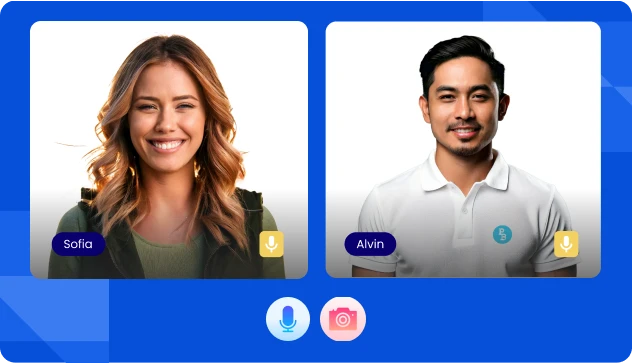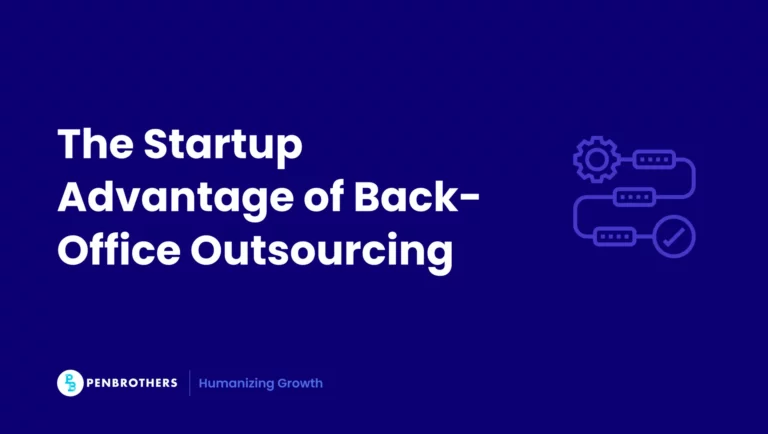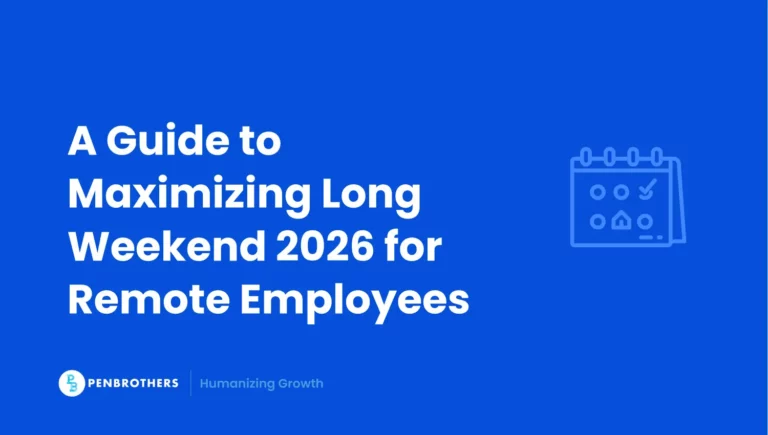Global workforces are no longer confined to the same building or even the same time zone. Distributed teams are the norm, not the exception. With that shift comes a difficult, often uncomfortable question: Can you terminate an employee by phone? Not just logistically but legally, ethically, and with dignity. For HR leaders and startup founders managing offshore teams, this decision has consequences beyond a single conversation.
Is It Legal to Terminate an Employee by Phone?
Let’s get the legal stuff out of the way. In many jurisdictions, particularly in the United States, there is no federal law that prohibits terminating an employee over the phone. That said, several states require written notice or in-person delivery depending on the circumstances. Other countries, like those in the EU, may impose stricter termination protocols.
So yes, technically, an employee is terminated the moment you communicate it clearly. But that doesn’t make it a best practice. At Penbrothers, we act like an Employer of Record (EOR), which means we ensure that any termination process complies with local labor laws and includes the correct offboarding procedures from the start.
Why It’s Generally Not Recommended
Terminating an employee over the phone might seem efficient. But in practice, it can backfire.
1. It Feels Impersonal and Often Disrespectful
Terminating an employee is a human moment. A phone call strips that moment of empathy. There’s no eye contact, no space for reaction, no opportunity to demonstrate basic compassion. What could be a professional offboarding can quickly feel like a cold dismissal.
From the employee’s perspective, being let go without so much as a face-to-face meeting (even virtually) can feel like being discarded, not released. And that emotional response doesn’t end with the call. Former employees talk, internally and externally. If the exit feels rushed or disrespectful, it undermines your company culture and can impact retention, morale, and Glassdoor reviews.
2. It’s Harder to Protect Yourself Legally
Phone calls are notoriously difficult to document. There’s no transcript unless recorded (which raises its own legal concerns depending on jurisdiction), and no visual cues or witnesses to support how the message was delivered.
This becomes a liability if the employee challenges the termination whether for wrongful dismissal, discrimination, or lack of due process. By contrast, written notices, formal meeting documentation, and digital trails offer a clear record of events, language used, and the rationale behind the decision.
According to SHRM, one of the most common mistakes leading to wrongful termination claims is failing to properly document the reason for termination, particularly in cases involving disciplinary action.
3. It Breeds Misunderstandings, Fast
A termination is rarely a single-sentence conversation. It may involve complex legal implications, performance feedback, exit entitlements, and future references. A phone call compresses that into a difficult-to-absorb format especially when emotions run high.
Without the support of visual cues like body language or facial expressions, it’s easier for your message to be misunderstood, misremembered, or misrepresented. What you intended as clear may be heard as abrupt. What you hoped was neutral may come across as accusatory.
In remote settings, the risk of miscommunication is even higher especially when language, culture, or tone differences are at play.
4. It’s Emotionally Unfair to the Employee
Being terminated is one of the most stressful events in an employee’s professional life. Delivering that news by phone often denies them the psychological space to ask questions, process what happened, or seek closure.
Gallup research shows that when employees feel supported by their manager during their exit such as through respectful communication or thoughtful timing, they are 6.2 times more likely to be satisfied with the exit process. And those who have a positive experience are 43% more likely to recommend their former employer even after departure.
Respect during offboarding isn’t just a kindness. It’s a long-term investment in trust. Even if the employee is terminated according to policy, the manner of communication affects your employer brand.
When a Phone Termination Might Be Justified
Now, there are exceptions. Remote-first companies or distributed teams often encounter logistical barriers. In such cases:
1. The Employee Is Remote or on Extended Leave
When the employee is based in another country or currently on medical, parental, or personal leave, a face-to-face meeting may not be feasible. In such cases, a phone call, ideally preceded or accompanied by a video conference, may be necessary.
Still, this doesn’t excuse a rushed or transactional approach. A 60-second call may check the legal box, but it will damage the human relationship. Instead, take steps to humanize the conversation:
- Acknowledge their contributions.
- Clearly explain the reasons behind the decision.
- Allow time for questions, and listen.
- Offer to send a follow-up email or exit interview form so they feel heard even in the final moments.
Offboarding remotely doesn’t mean offboarding impersonally.
2. The Employee Has Already Been Formally Terminated
If the termination has already been documented in writing such as through an official letter or EOR-issued separation notice, the phone call may serve a different purpose.
Use this touchpoint to clarify next steps, confirm understanding, and offer final closure. It’s an opportunity to express gratitude, provide logistical information (such as final pay, benefits, or return of equipment), and soften the experience with professional courtesy.
Even when the employee is terminated officially, the way you wrap up the process can still leave a lasting impression. Use the moment wisely.
Best Practices When Terminating an Employee by Phone
If you must do it by phone, here’s how to minimize risk and maximize respect:
1. Choose the Right Time
Timing matters more than most people realize. Avoid calling during high-stress moments like mid-shift, during peak hours, or when the employee is visibly struggling with personal issues.
Instead, schedule a quiet time when the employee is likely to be calm and attentive. Make sure they have space to process the news, ask questions, and, if needed, step away privately after the conversation. An unexpected call that pulls them out of a meeting or task can amplify distress and confusion.
2. Be Direct, But Human
Don’t bury the lede. Begin the conversation with a clear, concise statement that communicates the decision. Then follow up with context, not a cold list of justifications.
Avoid corporate jargon or vague language. Be honest, but compassionate. Clarity will help them understand the situation. Kindness will help them walk away with less resentment.
3. Stay Professional Even If It’s Uncomfortable
Terminations are difficult by nature. But they are still part of the employee experience. Your tone should reflect professionalism, not personal frustration or awkwardness.
Even if the reason involves misconduct or poor performance, maintain composure. You’re not just ending a job, you’re shaping the final impression of your leadership, and your company. Respect is non-negotiable.
4. Send a Formal Written Confirmation
A phone call is not enough. Always follow up immediately with a written confirmation outlining the termination details. You can use this termination letter template to make sure your communication is structured, compliant, and clear.
The email or letter should include:
- Official termination date
- Reason for termination
- Final pay details (Curious how separation pay is calculated in the Philippines? Here’s a quick breakdown of what to expect regarding separation pay requirements.)
- Information on benefits, severance pay, or equipment return
- Points of contact for HR or legal questions
This isn’t just about procedure. It protects both sides and ensures legal clarity.
5. Close With Empathy and Goodwill
Even if the outcome is non-negotiable, the tone of the exit can still be thoughtful.
Thank the employee for their contributions, however small. Express genuine hope for their future. If appropriate, offer to provide a reference or support their next step. A graceful goodbye leaves the door open, preserves mutual respect, and reduces reputational risk.
Incorporating these best practices isn’t just about manners. According to a 2025 Thomson Reuters CoCounsel article, “improper or illegal terminations expose companies to consequential legal issues and financial risk,” noting that adhering to proper termination procedures is the most important way to avoid litigation.
The Bigger Picture: Protecting Your Brand and Culture
Every time an employee is terminated, others are watching. They’re asking: Will I be treated fairly if I ever end up on the other side?
At Penbrothers, we support our clients in building long-term, trust-first relationships with offshore talent. That includes offboarding. We handle complex labor compliance, ensure country-specific protocols are followed, and when needed, act as your proxy to ensure every exit is managed with empathy.
Don’t underestimate the cost of poor offboarding. In fact, 75% of job seekers consider a company’s brand including how it handles layoffs before they apply.
Don’t let a poorly handled termination erode the culture you’ve worked hard to build. Your employer brand depends on it.
Final Thoughts
Yes, it might be legal. No, it’s rarely ideal. If an employee is terminated, the how and when matter as much as the why.
Use phone terminations sparingly. Document everything. Treat people like people, not problems. And if you’re unsure, lean on partners like Penbrothers who understand not just labor laws, but the nuances of building and letting go of offshore teams with grace.
You don’t have to do it alone. And you shouldn’t have to. Talk to us!






